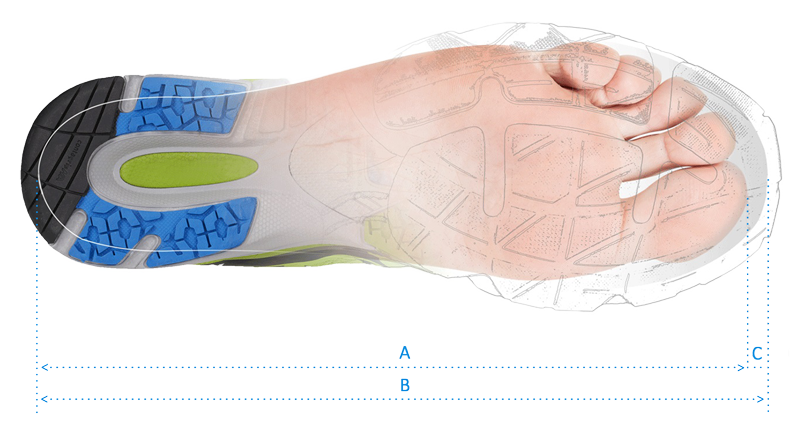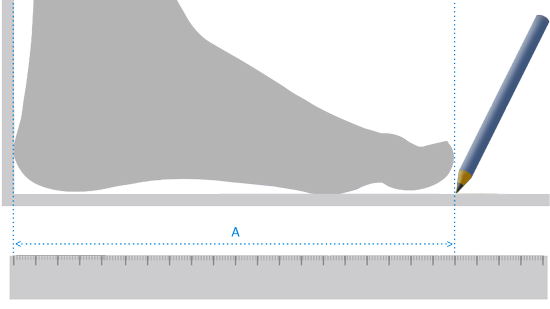Choosing Running Shoes
Running is one of the most important and most popular sports activities, which is the reason why manufacturers try to come up with new and better technologies, which offer better performance, protection and support. Sportisimo has a wide offer of various types of running shoes, so you can choose the perfect pair depending on the terrain and your running style.
What do you have to consider when choosing shoes?
- running terrain - roads and reinforced paths, trails, nature and mountains
- running technique and pronation - over the heel, underpronation (supination), overpronation, neutral
- your weight - cushioning system
- foot size - length and width, high or low instep
- running speed preferences - training, track, racing etc.
Running shoes for reinforced surfaces
The most common type of running shoes. These shoes allow you to run and walk smoothly on all roads, smooth dirt roads and other solid surfaces. Typical characteristics of road running shoes are:
- better cushioning - depending on weight and running technique, more damping technologies
- rebound support
- lightweight
- high breathability of the upper material - mesh materials
- smooth and adhesive outsoles - most manufacturers use special material coumpounds for long-lasting durability
- high comfort during running
- the upper material is less protected from damage
- not suitable for trail running - the shoe slides on muddy ground and most models are not water resistant (except shoes with a membrane)

Trail Running Shoes
Trail running shoes are mainly used on hard and soft ground full of various bumps (stones, cones, root), such as forest trails. The purpose of trail running shoes is to protect your feet and legs from the unevenness and so to prevent possible injuries like ankle sprains. The shoes offers better traction on wet and slippery ground such as mud. Other traits of trial shoes:
- coarser outsole provides more effective traction on unrefined terrain and provides increased bounce control
- durable upper material - protects from abrasion
- less ventilation
- increased shoe weight - the shoe is often equipped with a membrane or a water-resistant treatment
- tougher outsole improves torsional strength and prevents injuries
Neutral Running Shoes
Some models of running shoes allow universal use and can be worn for walking, on the roads and in the terrain. So, if your running route takes you on the road and also crosses uneven terrain, it's best to choose neutral (universal) or trail running shoes.
Running Technique and Pronation
The right pronation while running or walking should go over the heel, so most of the cushioning systems are placed on the heel of the shoe. These systems provide for the absorption of most impacts, distribute the pressure, protect the movement system and so ensure increased comfort. During impact, the feet are loaded with a 2-3 times their own weight with each step. Most of the cheapest models contain only an EVA foam, which is a simple and affordable material, which however quickly loses its damping function. For active runners these shoes are insufficient. Active runners find these shoes insufficient and prefer models of a higher category, which provide more advanced cushioning.
Pronation:
Pronation is a natural movement with which the leg partially attenuates the impact. However, excessive pronation during running is not desired and can lead to health problems. Runners with excessive pronation should wear shoes with inner foot support.These special shoes contain higher and harder layer of a material, which prevents exccesive pronation.
Neutral - the foot lands on the middle, or slightly on the inner or outer side of the sole
Supination - an outward roll of the foot (legs with an "O" shape)
Overpronation - after landing, the foot (ankle) is excessively flexed to the inside (the legs are in the form of an X)

| Pronație | Arch | ||
| A | Neutral | D |
Normal |
| B | Supination | E | High |
| C | Overpronation | F | Flat |
Choosing the right size
When buying shoes, choosing the right size is essential. If you click on the size, top line will show you the size in other measurement units. Different brands can use different sizing. We recommend choosing your size according to the measurements in centimetres. If you are buying shoes for hiking or running, an unwritten rule says that the shoe should be approx. 0,5 – 1 cm larger. During longer walks, especially with a backpack, your foot arch loosens slightly and your foot stretches.
 A - foot length
A - foot length
B - insole length
C - 5 mm (0.20 inch)
Measuring your foot
Equipment:
- Use either a shoe box or any wall with a 90° angle.
- Get a piece of paper or a cardboard, ruler and a pen.
What next?
- Be sure to wear your usual socks.
- Step on the piece of paper and position your foot in a 90° angle to a wall or use a shoe box.
- Use a ruler and a pen to draw a line right above your longest toe.
- Measure the distance from the line to the wall.
- Choose size accordingly.
Always measure both legs because in most cases the length is different. Choose the size according to the longer foot.

А - foot length in centimetres
